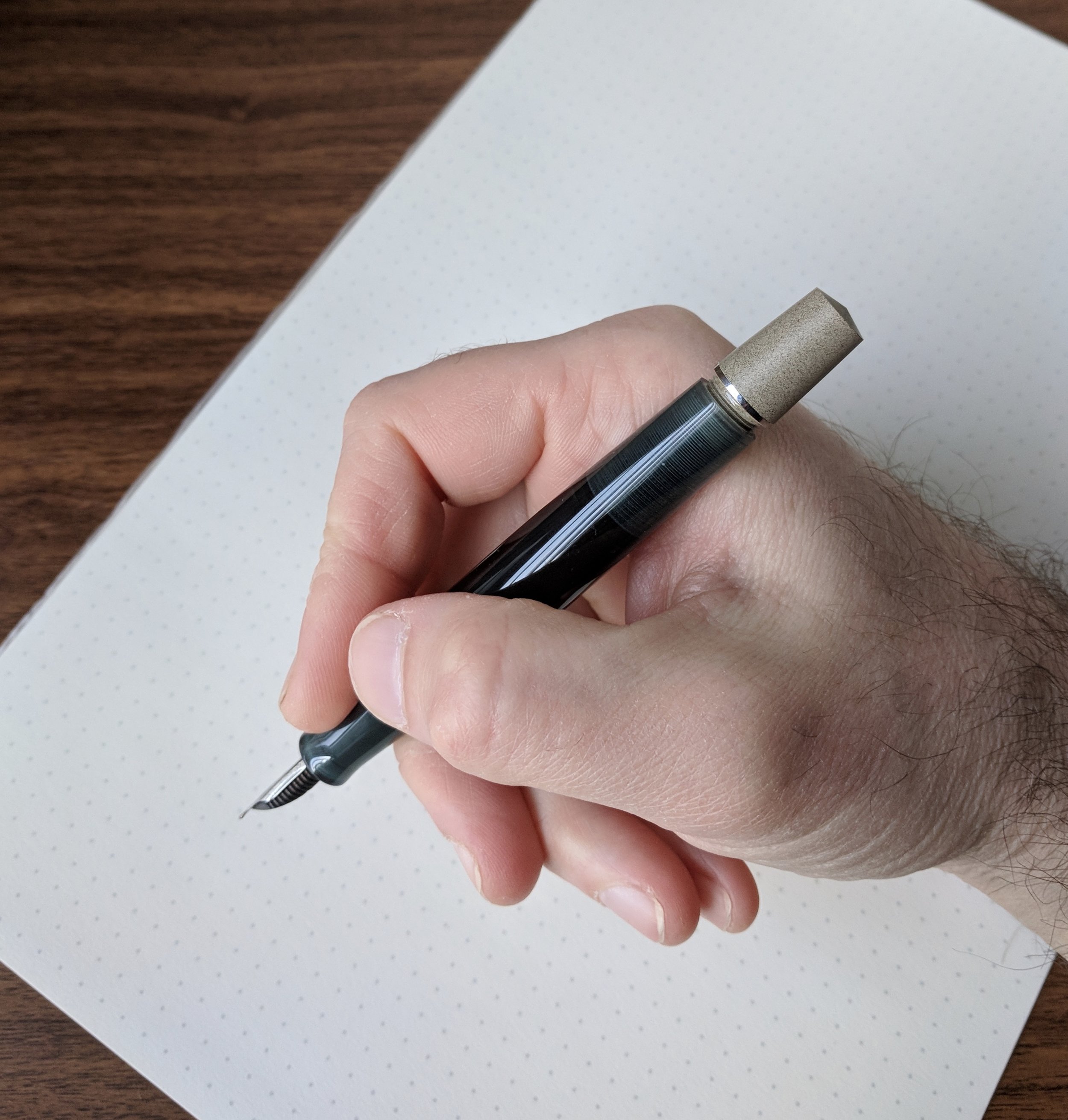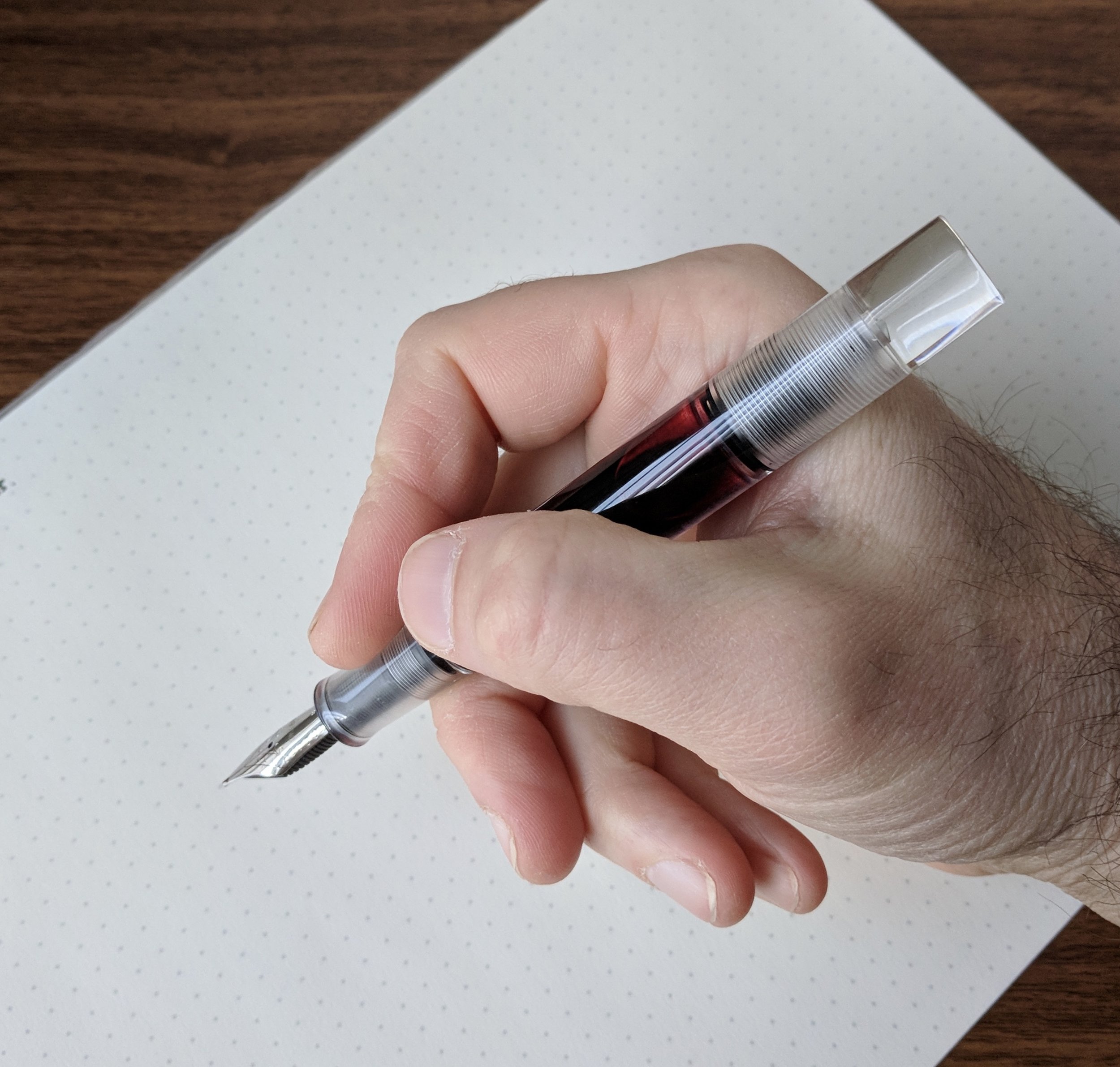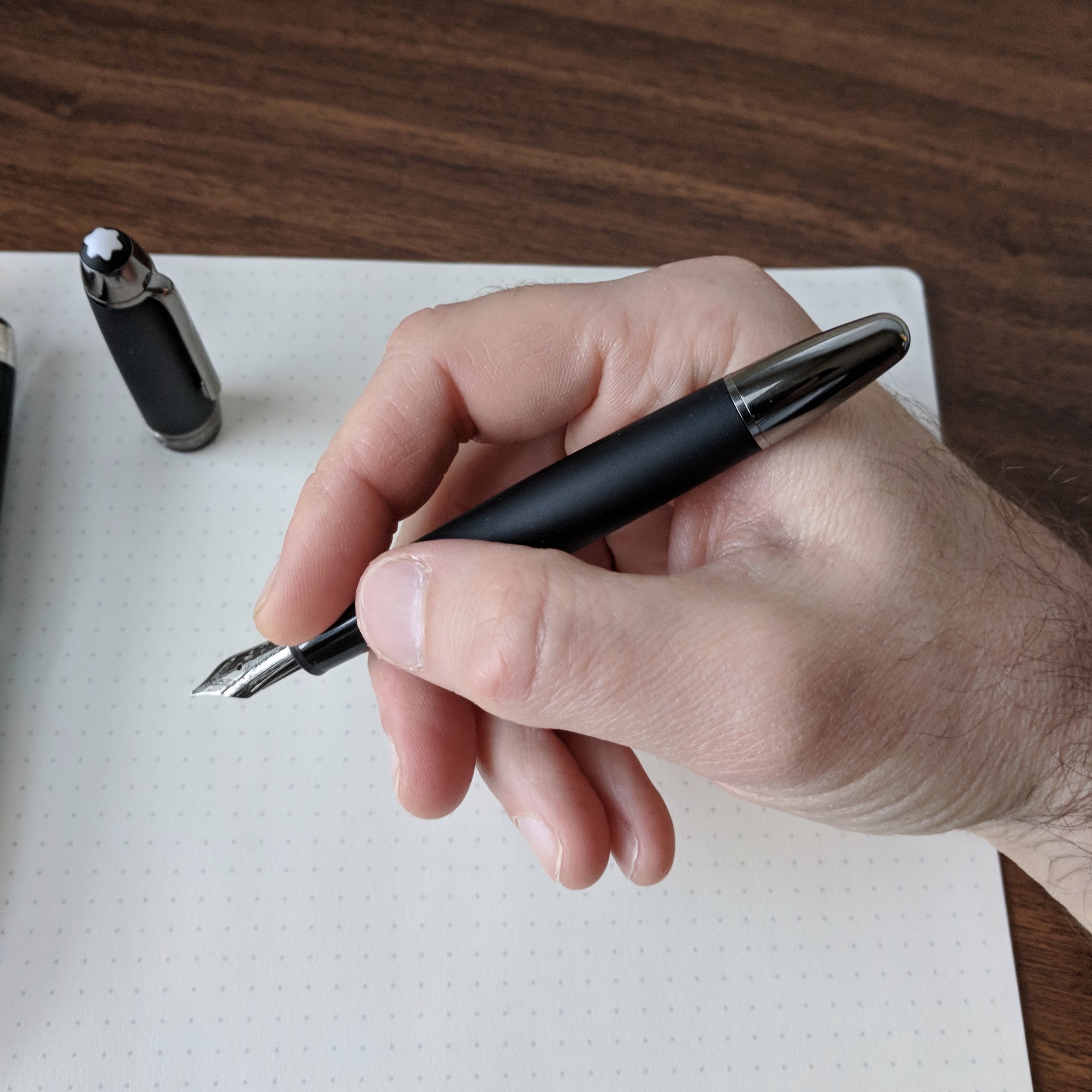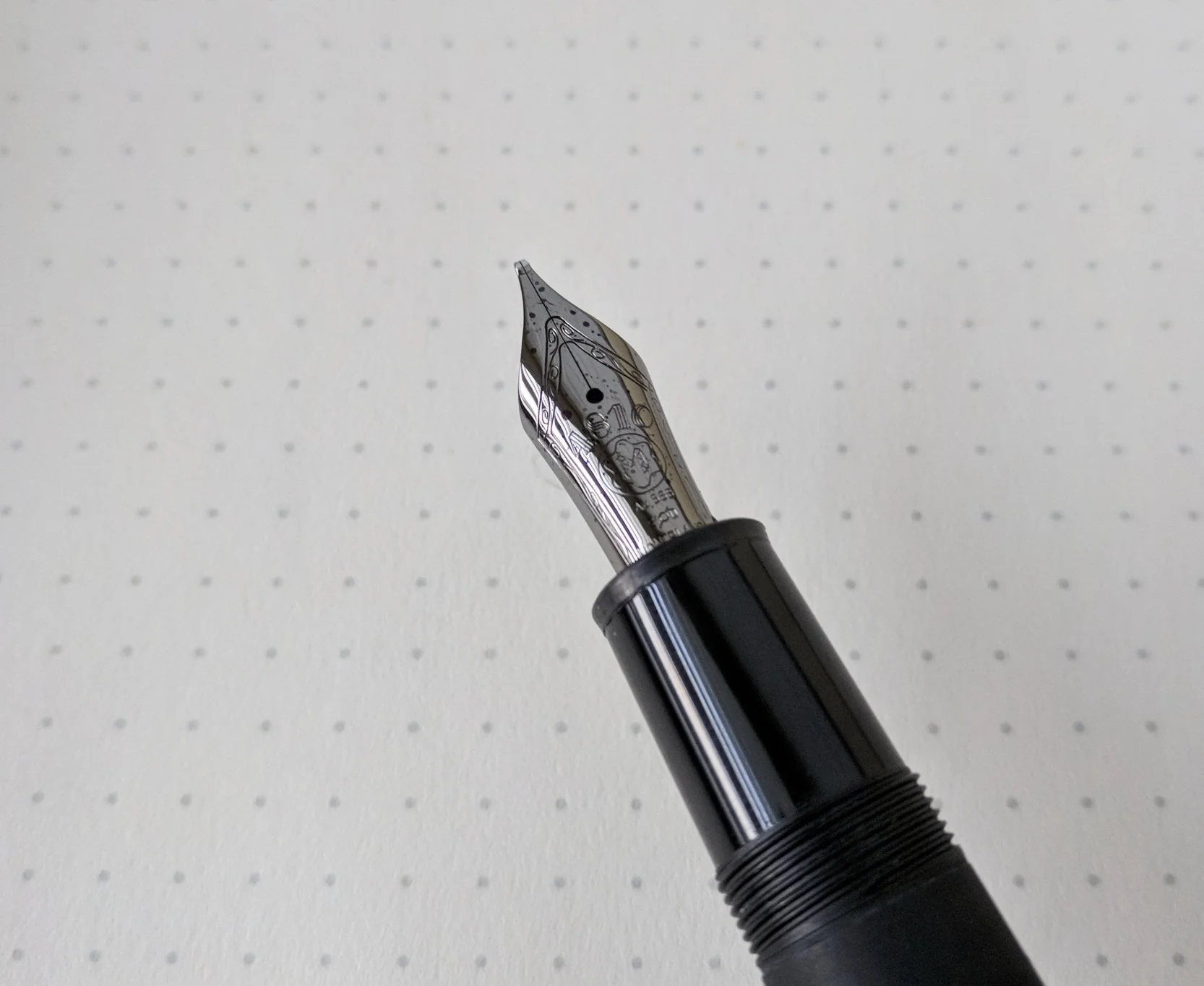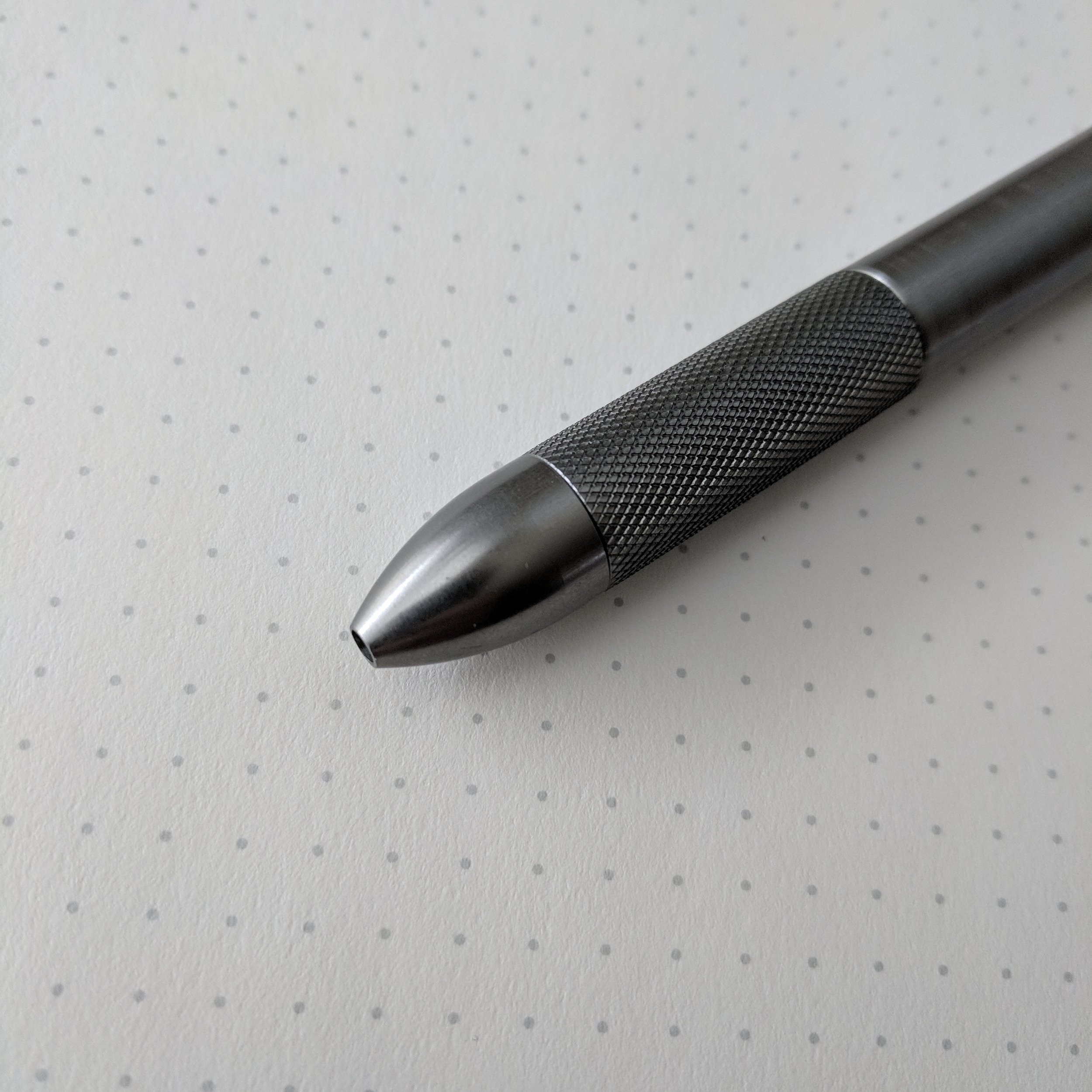Since entirely new fountain pen brands are few and far between, those that do hit the market tend to immediately catch my attention, especially when the pens being offered are in any way unique. Enter Opus 88.
Opus 88 is a Taiwanese company that, from what I have gleaned on pen forums and other “unofficial” (and unverified) sources of research, previously has manufactured pens on a contract basis for other, better-known pen companies. This past fall, they started selling their own "Opus 88" branded pens in the United States through Pen Chalet. The pens apparently have sold very well so far, with certain colors and nib sizes periodically going out of stock.
Design and Build
Opus 88 currently offers two models: a smaller "Koloro" demonstrator that is available in four colors: blue/tan, blue, yellow/tan, and red, and a larger transparent demonstrator with black trim. The Koloro pens feature a unique combination of ebonite and acrylic. The majority of the barrel is constructed from acrylic, while most of the cap and the blind cap are ebonite. The only trim is a somewhat plain chrome clip.
Both Opus 88 models feature minimal branding, just "Opus 88" on the cap. On the Koloro pens, the branding is engraved. On the larger demonstrator, shown below, it's screen printed, which doesn't look as nice and likely won't be as durable.
The transparent demonstrator (also labeled the “Koloro” on Pen Chalet’s website, but I think that may be a typo) is much larger, made entirely from transparent polished acrylic, and features matte black-plated trim. Both pens are well-made for their price point, with smooth threading on the caps, sections, and blind caps, and no readily apparent tool marks or other manufacturing artifacts. For unique pens hovering around the $100 mark, the Opus 88 pens represent good value.
Filling System
All of the Opus 88 pens released to date are Japanese-style eyedroppers. It’s a pretty basic system: To fill the pen, you unscrew the section and use the included glass eyedropper or a syringe to fill the barrel with ink. I haven’t officially measured the ink capacity, but these pens hold a lot. Pen Chalet states that the smaller pens hold 2ml, but my guess would be that this estimate is on the low end. The larger pen holds nearly 4ml, as I was able to get almost an entire sample vial into the barrel. The section on each pen comes pre-fitted with an o-ring to prevent leakage, and I opted to add a bit of silicon grease to the section threads just to be on the safe side, since I travel so much and an accident could be disastrous.
In order to increase ink flow to the nib, all you need to do is open the valve, which unscrews like a piston knob at the rear of the barrel.
A note on the “Japanese-style” eyedropper system: While the Opus 88 pens are fitted with blind caps that unscrew, this is not a piston-filling or converter pen, and the blind cap does not force ink into or "prime" the feed. Eyedroppers are entirely gravity driven. The purpose of the blind cap is to control a stopper, which seals off ink flow from the barrel to the nib so that ink doesn’t leak out when you’re not writing - a common occurrence in eyedroppers without this shutoff valve mechanism. Without a way to restrict ink flow, shaking, drops, and especially temperature and altitude fluctuations can cause the ink in an eyedropper to expand and “burp” into the cap, into your bag, or even onto the paper when you’re writing. If you plan on using this pen extensively at work or while travelling, as I have, the shutoff valve is a good feature to have, and previously I had only seen it on extremely high-end Japanese Urushi eyedroppers such as those made by Danitrio.
A shot of the Opus 88 Koloro demonstrator with the blind cap unscrewed and the valve opened. When the blind cap is screwed all the way down, the plunger/stopper seals off the nib and feed, keeping the ink in the barrel.
The flip side is that in order to write for extended periods of time, you will need to open the shutoff valve by slightly unscrewing the blind cap to allow a continuous flow of ink to the feed, much as you would need to do with a TWSBI Vac or Pilot Custom 823. This allows ink to flow from the barrel into the section and saturate the feed. You can close the valve at this point, and with finer nibs should have enough ink to write for a page or two. I tend to leave the valve open all day while I’m at work, and close it up when I get ready to go home. The system works incredibly well. With the valve open, I’ve never had these pens dry out, skip, or hard-start.
Writing Experience
Opus 88 uses reliable stainless steel German nibs made by JoWo. The Koloro demonstrators use JoWo No. 5 nibs, while the larger transparent demonstrator uses a No. 6 nib. All three of my pens arrived well-tuned and did not require any nib adjustments. JoWo nibs are among the best stock stainless steel nibs, though I do find that the smaller No. 5 nibs work best in eyedropper or cartridge pens because they tend to write very dry when attached to a converter. I suspect this has something to do with the construction of the feeds in the No. 5 nib units, but I haven’t done enough experimenting to say for sure.
Nib size comparison: JoWo No. 5 (left) vs. No. 6 (right)
Both Opus 88 models are quite light, and therefore very comfortable to write with for long periods of time. The Koloro posts easily, even with the blind cap partially unscrewed, and I tend to use the smaller pen posted. The big transparent eyedropper doesn’t post, so it mainly sits at my desk at home.
Takeaways and Where to Buy
As far as I’m aware, Pen Chalet is the exclusive distributor of Opus 88 fountain pens in the United States, though that may change as these pens attract more attention and become more widely available. Personally, I hope they do, because Opus 88 should have a hit on their hands with eyedropper fans who need a pen that holds a ton of ink and who don’t want to worry about the perils of temperature fluctuation and messy ink burps. Eyedroppers aren’t for everybody, however. They tend to be messier to fill and to clean, and if you like the look of these pens I’d recommend that you start out with one of the smaller, less expensive Koloro demonstrators, which is a much more practical size that will appeal to most people.
The multicolor ebonite and acrylic “Koloro” demonstrators are currently priced at $93 (minus whatever discount code Ron has running at any given time). The transparent demonstrator is available for $120 (minus applicable discounts).
Disclaimer: Pen Chalet is a paid sponsor of this blog. I purchased these pens from Pen Chalet at a discount for purposes of this review. This post contains affiliate links.
